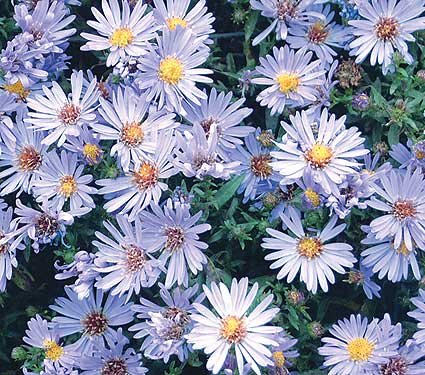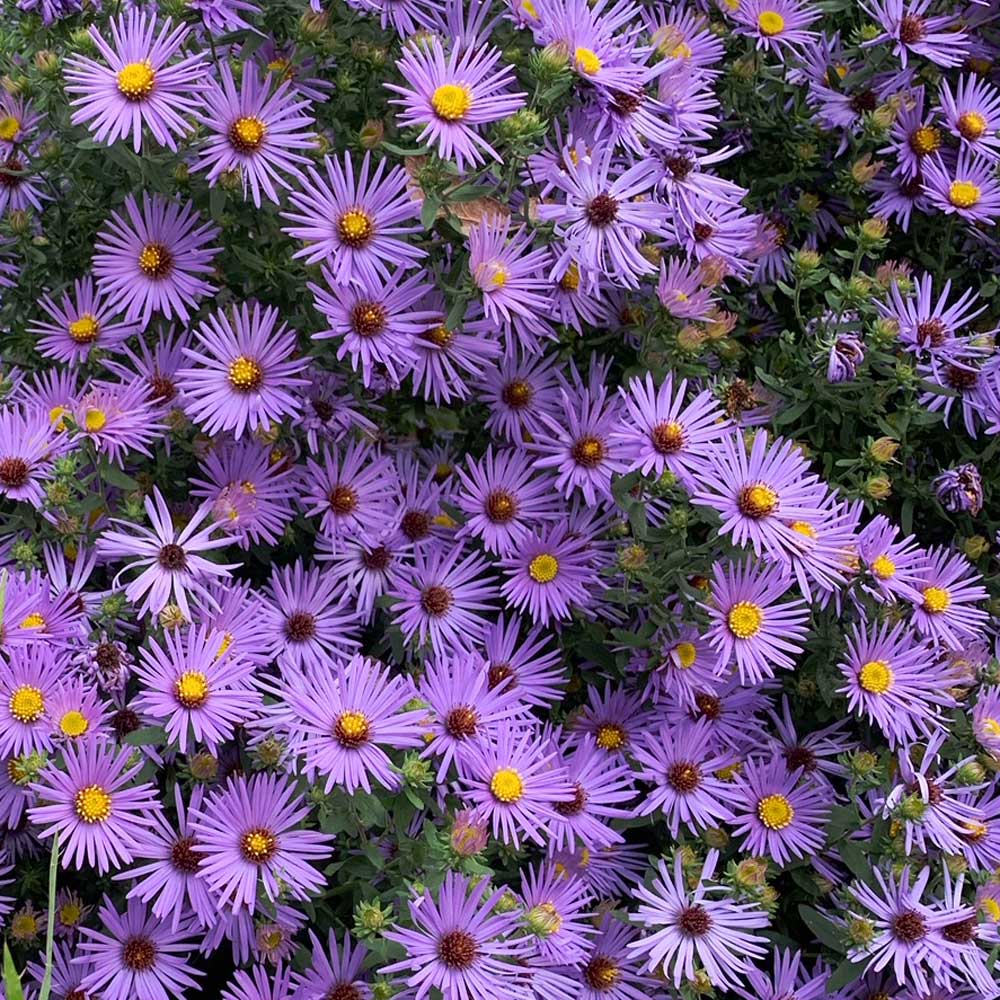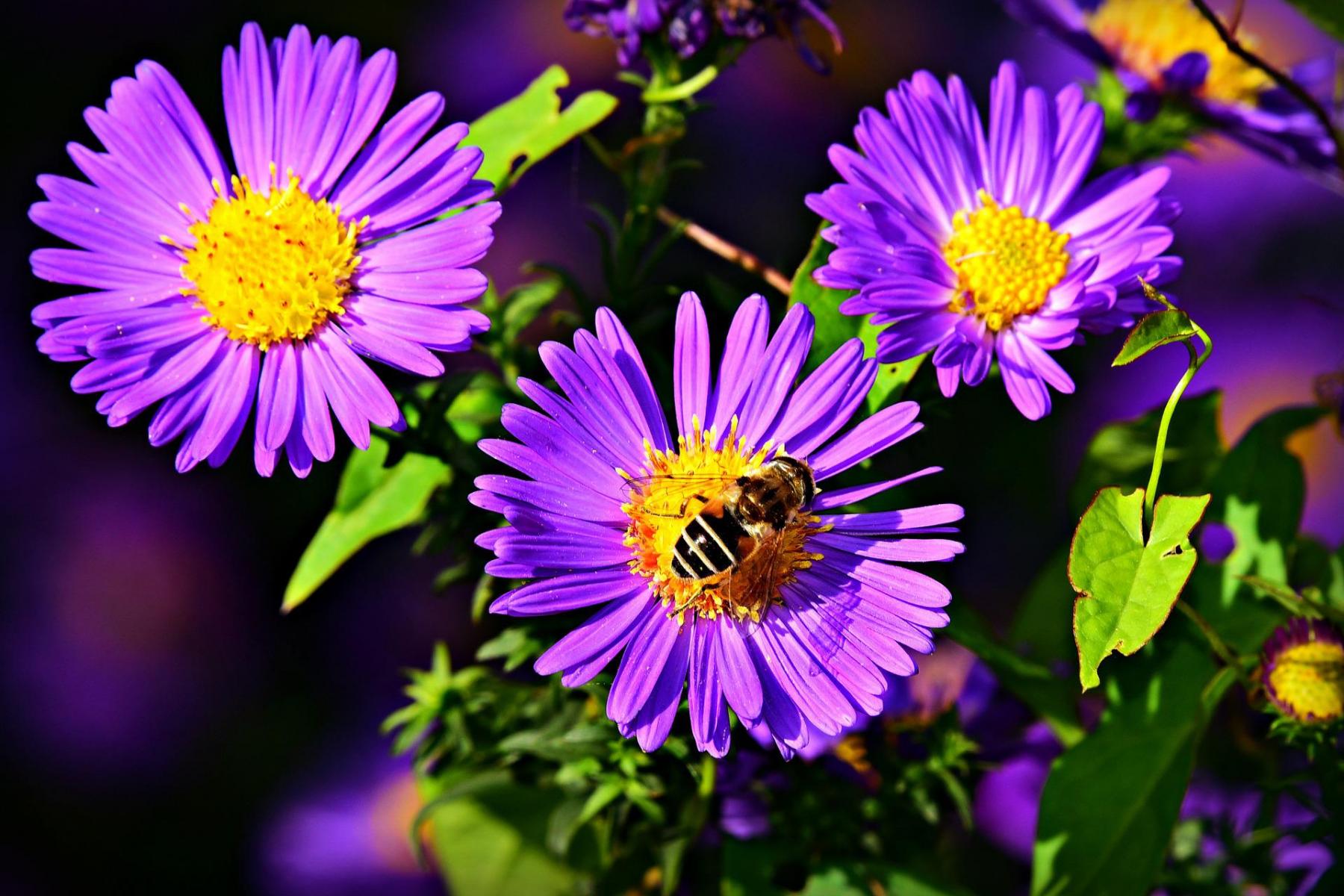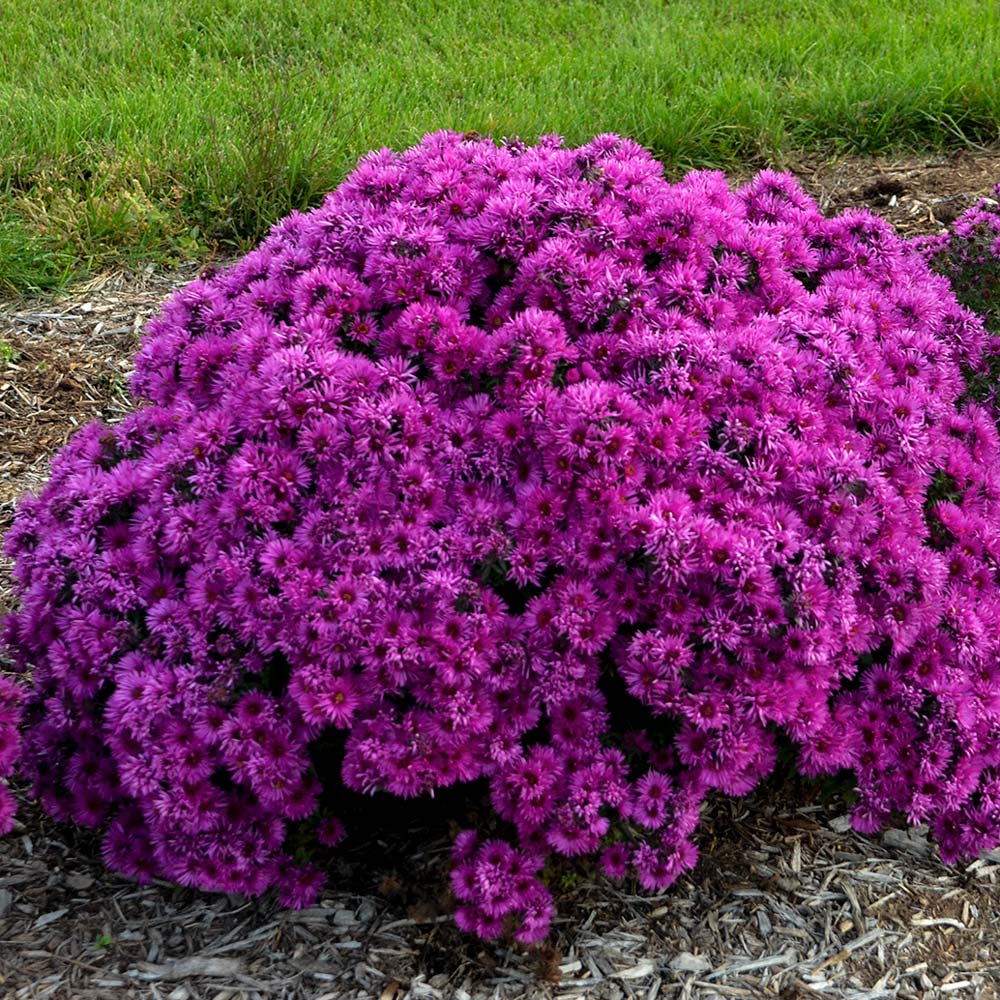
Late summer and fall can be a dreary time in the landscape, with little else but coreopsis and Black-eyed Susan blooming. So it's a good idea to plan, and plant, now for color in your fall gardens.
Asters are an excellent plant to add for additional fall color. Two species of aster, which are both improvements on native wildflowers, are New England Aster and New York Aster. Both aster species are native to the United States, although much of the breeding work to develop improved varieties has been done in England and Germany.
Both New England and New York aster have 4-5" long leaves, the bases of the leaves clasping the stem from which they originate. New England aster has very hairy leaves, while New York aster has smooth, hairless leaves. The small daisy-like flowers are produced in clusters and range in color from white to pink and blue. Dwarf cultivars perform well in containers or the front of a garden planting and don’t require staking. However, all of the taller selections, certainly those over 4 feet, require staking.
Locate plants in full sun to help them develop strong stems. Well drained soil and good air circulation are important when growing asters, since powdery mildew and rust can be a problem on susceptible cultivars. Thinning out some stems by mid-summer on very dense plants helps minimize disease problems.
 Nomenclature
Nomenclature
The Aster genus has been divided and renamed, in much the same way as plants in the Chrysanthemum family. So botanically, New England Aster is now known as Symphyotrichum novae-angliae and New York Aster, Symphyotrichum novi-belgii var. novi-belgii. New York Aster is also sometimes known as Michaelmas daisy, since it blooms around September 29 th, St. Michael’s Day.
Staking & Pinching
If staking is required, put your support materials in place before plants reach 6 inches in height. This will allow plants to grow up through the supports and hide them by mid-summer.
One natural-looking staking method uses bamboo stakes or strong, 1” diameter branches 5-6 feet long. Place the stakes in the ground, pounding them firmly into the soil, in a circle around the plant. Use string to create a web between and around the stakes. One web close to the ground, at approximately 18-24 inches, and a second web at 36-48 inches will provide good support for the taller cultivars.
Staking can be reduced or even eliminated in many of the medium-sized cultivars, however, if plants are cut back during the summer. Cut or pinch each stem back by 4-6 inches once or twice from spring to early summer, but no later than June 15th. A sharp pair of hedge shears makes quick work of this job.
 Selection
Selection
A few New England Aster cultivars worth trying include:
- ‘Alma Potschke’ has 1-2” bright rose flowers on 3-4 foot plants.
- ‘Fanny's Aster’ has blue flowers are grows to 4 feet.
- ‘Harrington’s Pink’ has large salmon-pink flowers and grows 3-5 feet tall.
- ‘Hella Lacy’ has 2" wide, violet-blue flowers and grows to 3-4 feet tall.
- ‘September Ruby’ has 1" wide deep ruby red flowers and grows 3-5 feet tall.
- ‘Wedding Lace’ has clean, white flowers and grows 3-4 feet tall.
Some dwarf New York Aster cultivars worth trying include:
- ‘Alert’ has double, crimson red flowers and grows 10-12 inches tall.
- ‘Heinz Richard’ has semi-double salmon-pink flowers and grows 12" tall.
- ‘Lady-in-Blue’ had blue flowers in fall and grows 12 inches tall.
- ‘Prof. Kippenburg’ has lavendar-blue, semi-double flowers and grows 9-12 inches tall.
- ‘Snow Cushion’ has white flowers, produces late in the fall and grows 6-8 inches tall.
- ‘Wood’s Purple’ has purple-blue flowers on 8-12 inch plants.
 Many additional cultivars, dwarf and full size, are available for both New York and New England aster.
Many additional cultivars, dwarf and full size, are available for both New York and New England aster.
Or consider asters native to the Great Plains.
- Calico aster, S. lateriflorum var. lateriflorum, is a horizontally branched, shrub-like aster. ‘Lady in Black’ is one of the most popular cultivars with dark purple foliage, featuring tiny white flowers with a rosy centers in fall. 2-3 feet height. It can self-seed and spread through the garden if it has full sun and good moisture, but is more well-behaved in shaded locations.
- Aromatic aster, S. oblongifolium, is 1-3 feet in height with blue/purple flowers. Cultivars include ‘Fanny’s Aster’ with blue flowers in late fall, ‘October Skies’ with lavender flowers on low 2 foot plants, and ‘Raydon’s Favorite’ featuring purple flowers with yellow centers on 2-3 foot plants.
- Sky blue Aster, S. oolentangiense var. oolentangiense, bears deep blue to violet flowers on 2-3 foot plants.
Images
- 'Woods Light Blue' New York aster. Image from White Flower Farms.
- 'Raydon's Favorite' aromatic aster. Image from White Flower Farms.
- Asters are a great fall-blooming flower for pollinators. Image from Pixabay.com.
- 'Pink Crush' New England aster. Image from White Flower Farms.